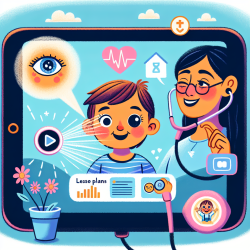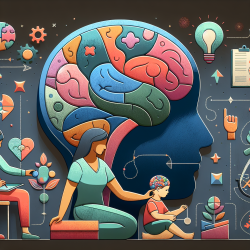As a parent of a child with special needs, you may often feel lost when it comes to planning and navigating Individualized Education Program (IEP) meetings. You are not alone. Many parents share the same feelings of uncertainty and confusion. The good news is, with the right guidance and support, you can become a confident advocate for your child's education and well-being.
IEP planning and meetings are crucial in ensuring your child receives the personalized support they need to thrive in school. Here at TinyEYE, we understand the unique challenges you face, and we're here to help you every step of the way.
What is an IEP?
An Individualized Education Program (IEP) is a written plan developed for a child with special needs. It outlines specific educational goals, the services your child will receive, and how progress will be measured. The IEP is a collaborative effort involving teachers, therapists, school staff, and, most importantly, you—the parent.
Preparing for an IEP Meeting
Preparation is key to a successful IEP meeting. Here are some steps you can take to ensure you are ready:
- Gather Information: Collect any relevant documents, such as previous IEPs, evaluation reports, and notes from teachers or therapists.
- Know Your Child’s Needs: Understand your child’s strengths, challenges, and specific needs. This will help you advocate effectively during the meeting.
- Set Goals: Think about what you want to achieve for your child. What are your short-term and long-term goals? Discuss these with the IEP team.
- Ask Questions: Don’t hesitate to ask questions if you don’t understand something. The IEP process can be complex, and it’s important to be clear on every aspect.
During the IEP Meeting
During the meeting, it’s important to stay focused and engaged. Here are some tips to help you navigate the discussion:
- Stay Positive: Approach the meeting with a positive attitude. Remember, everyone on the team wants the best for your child.
- Be Collaborative: Work together with the team to develop a plan that meets your child’s needs. Your input is valuable and essential.
- Take Notes: Write down important points and decisions made during the meeting. This will help you remember details and follow up as needed.
- Express Concerns: If you have any concerns or disagreements, voice them respectfully. It’s important to address issues early on.
After the IEP Meeting
The work doesn’t end once the meeting is over. Here’s what you can do to ensure your child’s IEP is effectively implemented:
- Review the IEP: Carefully review the final IEP document to ensure it accurately reflects the agreed-upon plan.
- Monitor Progress: Keep track of your child’s progress and communicate regularly with teachers and therapists.
- Stay Involved: Attend follow-up meetings and stay engaged in your child’s education. Your involvement is crucial to their success.
How TinyEYE Can Help
At TinyEYE, we offer online therapy services, including telehealth and speech therapy for autism, to support your child’s IEP goals. Our experienced therapists work closely with you and the school to provide personalized, effective interventions that make a real difference in your child’s life.
Feeling lost is natural, but you don’t have to navigate this journey alone. Take the next step by reaching out to us at TinyEYE. Together, we can create a brighter future for your child.
For more information on our services and how we can support your child’s IEP, please visit our website or contact us directly. Let’s work together to help your child achieve their full potential.










